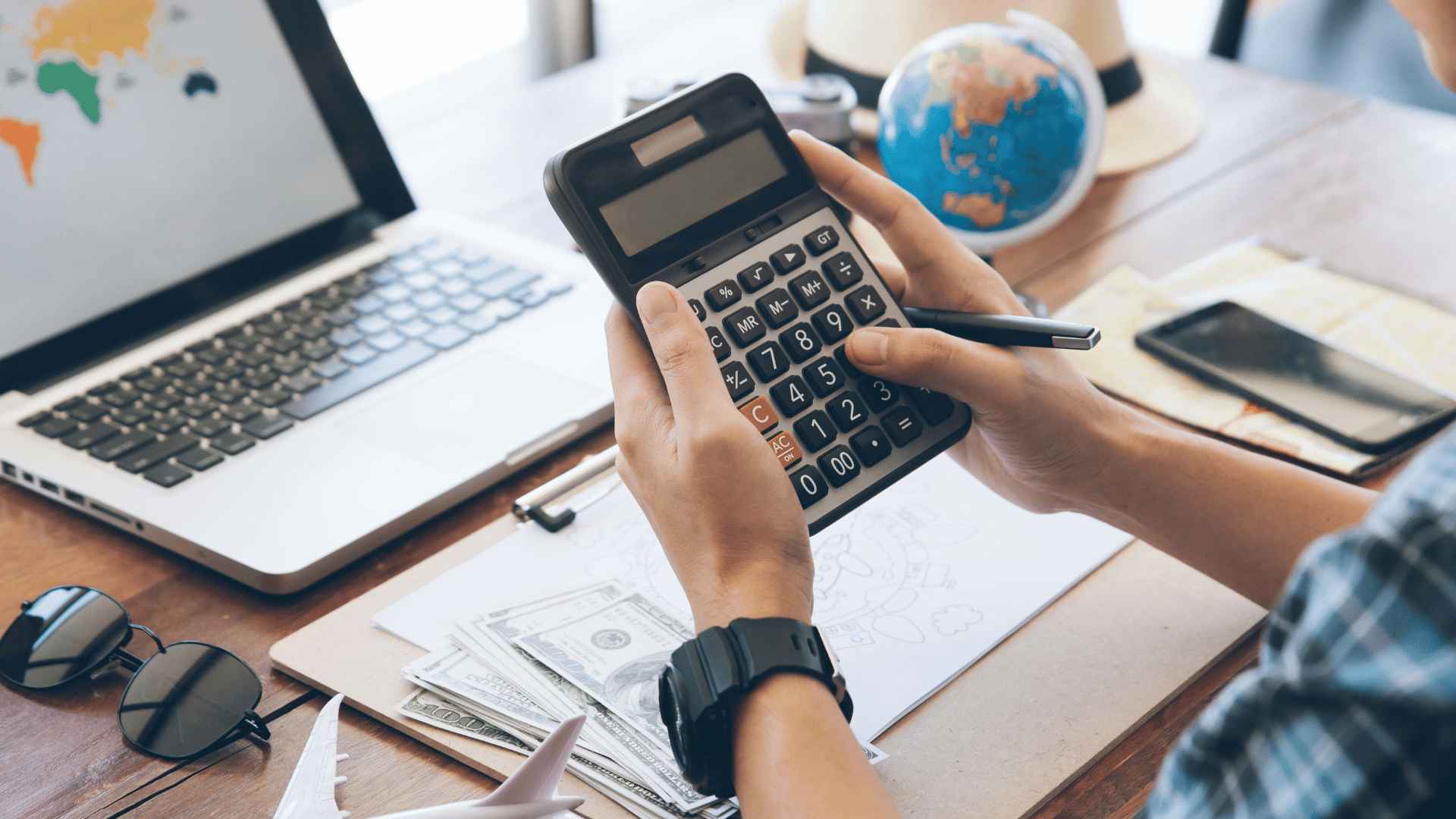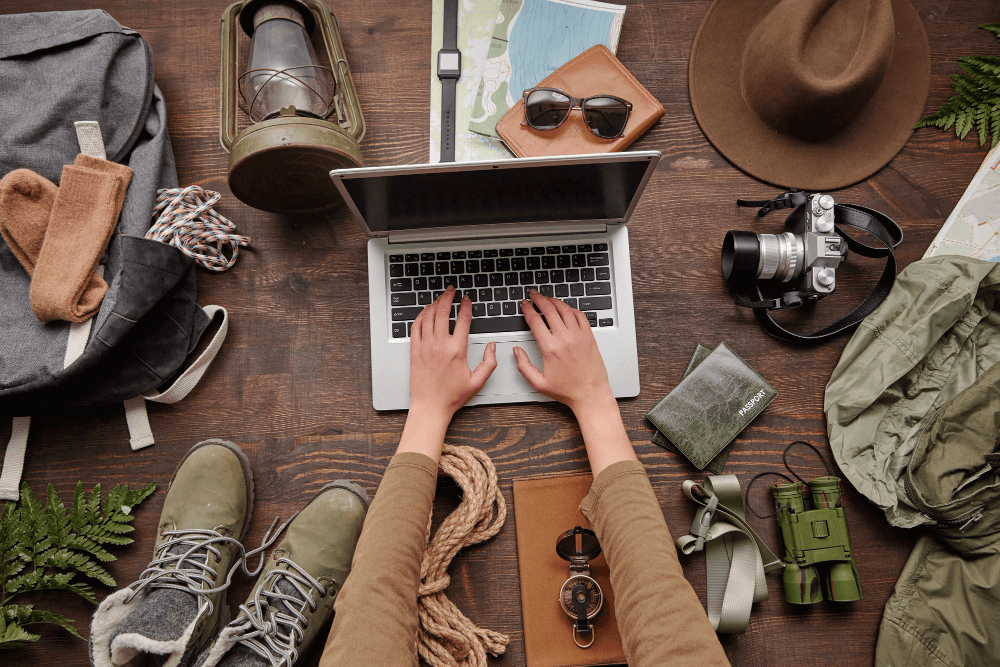Exploring new locations, engaging with diverse cultures, and making lifelong experiences are all made possible through travel. If you travel abroad you're not careful, it may also end up costing you money. It's crucial to prepare and handle your finances carefully if you want to make sure that your travel expenses stay within your spending limit. Here are some suggestions for controlling your trip expenses:
Create a Budget:
Before you even start planning your trip, set a realistic budget. Consider all potential expenses, including transportation, accommodation, food, activities, and souvenirs. Having a clear budget will help you make informed decisions throughout your trip.
Research and Compare Prices:
Spend time researching and comparing prices for flights, accommodations, and activities. Use travel websites, apps, and price comparison tools to find the best deals. Flexibility in your travel dates can also help you secure better prices.
Use Travel Rewards and Loyalty Programs:
If you have travel rewards credit cards or belong to loyalty programs for airlines or hotel chains, use them to your advantage. Accumulate points or miles that can be redeemed for discounts or free travel-related expenses.
Book in Advance:
Booking flights, accommodations, and activities well in advance often results in lower prices. Last-minute bookings tend to be more expensive, so plan ahead to secure better deals.
Opt for Budget-Friendly Accommodations:
Consider staying in budget-friendly accommodations like hostels, guesthouses, or vacation rentals. These options can be significantly cheaper than luxury hotels while still offering comfort and convenience.
Cook Your Meals:
Dining out for every meal can quickly add up. Save money by eating at local markets, food stalls, or cooking your own meals if your accommodation provides kitchen facilities. This is not only cost-effective but also a great way to experience local cuisine.
Use Public Transportation:
Public transportation is often more affordable than taxis or rideshares. Use buses, trains, trams, or subway systems to get around the city or region you're visiting. Consider purchasing multi-day or tourist passes for added savings.
Plan Free or Low-Cost Activities:
Research free or low-cost attractions and activities at your destination. Many cities offer museums, parks, and cultural experiences that won't break the bank. Take advantage of these opportunities to travel safely explore without overspending.
Avoid Excessive Souvenir Shopping:
While it's natural to want to bring home souvenirs, limit your spending on trinkets and mementos. Focus on items that hold special meaning or practical value rather than buying impulsively.
Monitor Your Expenses:
Keep track of your international travel expenses using a budgeting app or a travel expense journal. This will help you stay accountable and make adjustments if necessary to stay within your budget.
Exchange Currency Wisely:
Be mindful of currency exchange rates and fees in foreign country. Use ATMs at banks or reputable exchange offices to withdraw local currency, and avoid currency exchange kiosks in tourist areas of other countries that often have unfavorable rates.
Travel Off-Peak:
Consider booking a foreign trip during off-peak or shoulder seasons when travel is less expensive overall. You'll also encounter fewer crowds, making for a more enjoyable experience.
Remember that travel safety is a combination of preparation, awareness, and good judgment. By following these tips and staying vigilant, and stay aware, you can reduce risks and have a safer and more enjoyable travel experience.
Keep Daily Spending Money Inside Your Belt
Keeping your daily spending money inside a belt or a money belt is a practical and secure way to manage your finances while traveling, particularly in unfamiliar or potentially risky environments abroad. Here's why it's a useful practice solo travelers, and some tips on how to do it effectively:
Choose the Right Money Belt:
Select a comfortable and discreet money belt that fits securely around your waist or under your clothing. Look for one made of lightweight, breathable material.
Distribute Funds: Avoid keeping all your money and cards in one place. Use the different compartments of the money belt to separate your daily spending cash from emergency funds or backup cards.
Only Carry What You Need: Don't overload your money belt with unnecessary items. Keep only the essentials, like a day's worth of cash, one or two cards, and your passport or a copy of it.
Keep It Hidden: Wear your money belt underneath your clothing, such as tucked into your pants or skirt. Ensure it's not visible from the outside, as this defeats the purpose of discreet storage.
Be Discreet When Accessing It: When you need to access your money belt, find a private or inconspicuous location, like a restroom or changing room, to do so. Avoid revealing it in public places.
Regularly Check Your Belongings: Periodically check personal items such your phone and money belt to ensure that nothing has gone missing or been damaged. This is especially important if you've been in crowded areas.
Use It as a Backup: Your money belt should primarily serve as a secure backup for your daily spending money and travel documents. Carry a small amount of local currency and a single credit card, in a more easily accessible wallet for convenience.
Inform Trusted Travel Companions: Let someone you trust, such as friends, a fellow traveler or a family member back home, know about your money belt and how to access its contents in case of an emergency.
Combine with Other Safety Measures: While a money belt adds a layer of protection, it's not foolproof. Continue to practice other safety measures like staying aware of your surroundings, using hotel safes, and securing your personal belongings when hotel room is not in use.
Remember that using a money belt is just one aspect of keeping your finances secure while traveling. Combine it with good judgment, awareness local scams, and other various safety tips and precautions to ensure a worry-free and enjoyable travel experience.
Travel Safety For Women vs. Men
Travel safety is paramount for all travelers, regardless of gender, yet there are certain considerations that may differ between men and women when embarking on journeys. Here's a brief comparison of travel safety tips for women and men:
Travel Safety for Women: Women traveling alone should be vigilant about their surroundings and research destinations thoroughly. Dressing modestly in some places can help respect local customs and reduce unwanted attention. Responsible alcohol consumption is essential, as excessive drinking can impair judgment and make women more vulnerable. Personal security devices like whistles or alarms can offer added peace of mind. Trusting instincts is key—if a situation feels unsafe, remove oneself from it. Understanding local laws and customs is also crucial to navigate cultural norms effectively.
Travel Safety for Men: Men must remain cautious about scams and theft while traveling. Engaging in risky behavior such as excessive drinking, drug use, or confrontations can lead to safety issues. Choosing secure accommodations, being cautious with strangers, and respecting local customs are essential travel insurance for men as well. Just like women, solo male travelers should exercise common-sense safety practices, including researching destinations and staying aware of their surroundings. Carrying emergency contact information is advisable.
In conclusion, while there are some gender-specific safety considerations for women and men during travel, many universal safety principles apply. All travelers should prioritize research, situational and risk awareness, and good judgment to ensure a safe and enjoyable journey. Respecting local customs and traditions is vital for travelers of all genders, fostering positive interactions and cultural understanding.










